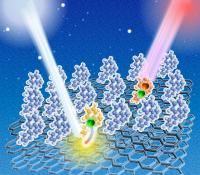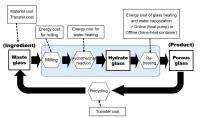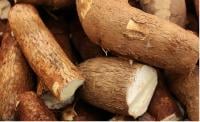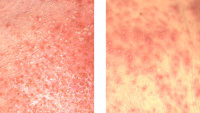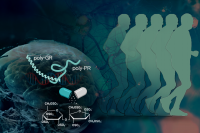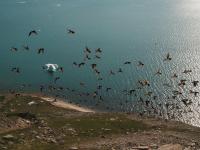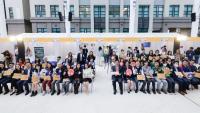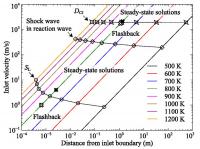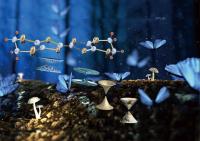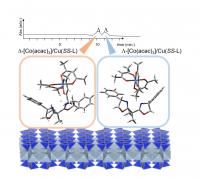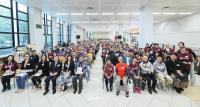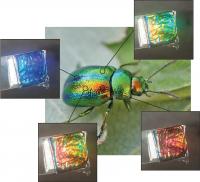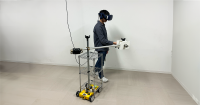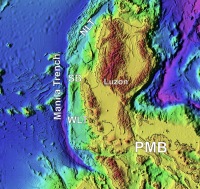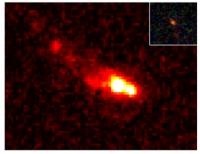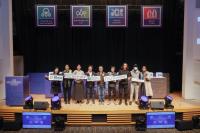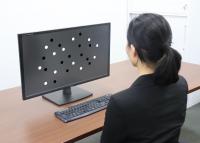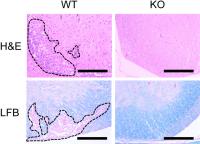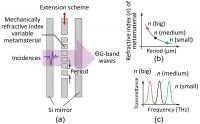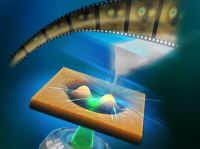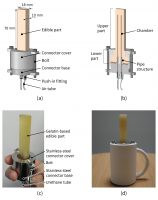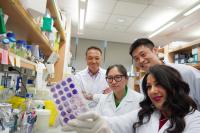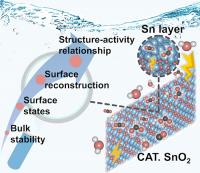Content is provided by our community of institutions, partners, researchers and journalists.
MAP Academy
19 Mar 2024
In the late 1930s, French archaeologists discovered a large and remarkable group of ivory sculptures, in Afghanistan's Begram (present-day Bagram). Stipulated to have been used as accents or embellishments for wooden furniture, these carved objects showcase a blend of Greco-Roman, Central Asian, Mediterranean, and Indic stylistic influences. Despite the political upheavals in the region, some of these ivory artefacts still survive. Explore how ongoing scholarly efforts shed light on the historical significance of these art objects, highlighting the cultural connections that were built and flourished along the Silk Road.
Osaka Metropolitan University
19 Mar 2024
Understanding electron behavior and surface structure of triphenylene thin film molecules deposited on graphite substrates under light irradiation
Osaka University
19 Mar 2024
Researchers from Osaka University conducted a series of participatory deliberation workshops at Osaka University in which the participants were asked to consider issues of future society and manufacturing, in general, and as they relate to hydrothermally produced porous glass. In workshops where the perspective of “imaginary future generations” was adopted, participants’ perceptions of the technology’s feasibility and future potentiality changed significantly.
Newcastle University in Singapore
19 Mar 2024
The 12th Starch Value Chain ASIA conference was held in Vientiane, at Crowne Plaza Hotel, from February 27 to 29, 2024. The conference encompassed four key themes: Asia’s starch markets, industrial and food-grade tapioca starch in Laos with expansion plans, sustainable climate-smart agri-technology for rice and cassava cultivation, and challenges for future growth in Asia's biogas-to-energy sector.
Osaka University
18 Mar 2024
Researchers from Osaka University developed a system that enables projection mapping within an illuminated environment. Several standard projectors and one large-aperture projector reproduce the environmental illumination in all areas except for the target object, whereas texture projectors display the texture on the unilluminated object’s surface. Experiments show that participants perceived the objects using surface-color mode instead of aperture-color mode, verifying that the proposed system has the potential to produce highly realistic interactive environments.
Osaka Metropolitan University
18 Mar 2024
Two rare skin conditions with similar symptoms can be mistaken for each other, so a scoring system has been formulated to aid physicians in distinguishing two diseases
Academia Sinica
18 Mar 2024
Amyotrophic Lateral Sclerosis (ALS) and Frontotemporal Dementia (FTD) are neurodegenerative diseases that commonly occur in middle-aged people. FTD is second only to Alzheimer's disease in terms of dementia prevalence. Both ALS and FTD arise from neuronal degeneration through mechanisms that remain unclear. Dr. Yun-Ru (Ruby) Chen's team in the Genomics Research Center (GRC), Academia Sinica recently discovered a new pathological mechanism for neuronal degeneration using synthetic peptides. They also discovered that a disaccharide can increase neuronal survival and reduce degeneration. The result provides therapeutic strategies for future treatment of these neurodegenerative diseases. The study was published in the top international journal "Science Advances" on February 23, 2024.
Hokkaido University
15 Mar 2024
Acoustic recordings of a colony of little auks reveal their nocturnal activities and offer valuable monitoring means for avian biology in the Arctic.
Asia Research News
15 Mar 2024
Asia Research News monitors the latest research news in Asia. Some highlights that caught our attention this week are what happens in our brains when we interact with dogs, our brain and eye activity when we focus on something, and how many children is the ‘ideal’ amount.
Lingnan University (LU)
15 Mar 2024
Lingnan University has launched a three-day (13-15 March) career expo, titled "Resurgence Career Expo@LingnanU 2024" on campus, drawing the participation of more than 100 companies offering over a thousand of job opportunities for Lingnanians. The first two days of the physical event attracted over a thousand Lingnan University students and alumni to participate. This marks the University’s first large-scale career expo since the COVID-19 pandemic. The aim of the event is to provide a platform for employers to engage with Lingnan students, introducing their companies, and jobs. This will allow students who are about to graduate to gain first-hand information about the job market and equip themselves for future career endeavours. Lingnan University also extends a warm welcome to alumni, encouraging them to return to campus and explore development opportunities across various industries. In addition to the physical career fair, Lingnan University is concurrently holding the "Resurgence Career Expo@LingnanU 2024" in hybrid mode. The online platform will remain accessible until the end of April, providing additional time for Lingnan students and graduates to explore job search strategies and pursue their desired careers.
Tohoku University
15 Mar 2024
Researchers from Tohoku University have theoretically linked ignition and deflagration in a combustion system, unlocking new configurations for stable, efficient combustion engines due to the possible existence of any number of steady-state solutions.
Ehime University
15 Mar 2024
The “scope of action” and the velocity of Dirac electrons in an organic material
Ehime University
15 Mar 2024
A packing material has been developed for chromatographic resolution on the basis of a clay mineral. The material is an adduct of chiral Cu(II) complex and synthetic hectorite.
Asia Research News
14 Mar 2024
Ancient Mars biomolecules, Gargling away bad bacteria, Molecule glasses magnify life-chemical observations, Cholesterol and cancer link, Quantum electronics leap, Plus our updated Experts for Media: Women list & Asia Research News 2024 is here. Read all in the latest Editor's Choice.
Lingnan University (LU)
14 Mar 2024
"LU Jockey Club Health and Financial Education Programme for Elderly", organised by Institute of Policy Studies of Lingnan University and funded by The Hong Kong Jockey Club Charities Trust, was awarded the IFEA (Teaching – School Division) Silver Award by Investor and Financial Education Council (IFEC), making it the only university in Hong Kong to be selected as one of the top three winners. The respective Assessment Committees are comprised of government representatives, IFEC Board members, and industry experts, recognising Lingnan University’s efforts to advance investor and financial education by improving the elderly’s health and financial literacy, and sharing best practices in investor and financial education projects. The Honourable Mr Paul Chan Mo-po, GBM, GBS, MH, JP, Financial Secretary of the HKSAR Government, presented an award to Lingnan University representative, Vice-President Prof Joshua Mok Ka-ho yesterday (13 March).
Singapore University of Technology and Design
13 Mar 2024
Inspired by beetle cuticles, SUTD and NUS scientists have developed optical structures that can produce vibrant, iridescent and completely biodegradable colours using chitin – the world's second most abundant organic material.
Tohoku University
13 Mar 2024
Recreating the action of opening doors in the virtual world requires engineering ways in which to provide the equivalent haptic feedback and steer users away from walls in the real world. A research group has done just this; developing RedirectedDoors+, which employs door robots and rotation to create a more realistic experience.
13 Mar 2024
Gas hydrates are great alternative energy sources but they could also harm us and the environment, note geologists from the University of the Philippines.
13 Mar 2024
An international research team have made unprecedentedly detailed observations of the earliest merger of galaxies ever witnessed. They suggest stars developed much faster and more efficiently than we thought. They used the James Webb Space Telescope (JWST) to observe the massive object as it was 510 million years after the Big Bang – i.e. around 13 billion years ago.
The Education University of Hong Kong (EdUHK)
12 Mar 2024
The Education University of Hong Kong (EdUHK) entrepreneurs swept the board at the Hong Kong Techathon+ in January 2024, winning gold, silver and bronze medals in the Digital Economy (Open Group) category.
Osaka Metropolitan University
12 Mar 2024
Findings could aid research into how information presentation might prevent human error
Hokkaido University
12 Mar 2024
A new study highlights a potential therapeutic target for immune-related disorders, such as multiple sclerosis and asthma.
Tohoku University
11 Mar 2024
Researchers at Tohoku university have addressed one of the key challenges of electromagnetic waves in the terahertz frequency range by developing a new type of tuneable filter for signals in the terahertz wave band.
Tohoku University
11 Mar 2024
Peptides are short strands of amino acids that are increasingly used therapeutically, as biomaterials and as chemical and biological probes. The capacity to isolate, manipulate and label peptides and larger proteins is limited, however, by the ability to reliably attach functional molecules, such as fluorescent compounds, to peptides in locations that won’t affect the three-dimensional structure and function of the short amino acid strand. Researchers have developed a unique chemical reaction to attach two distinct functional molecules to the N-terminus of a peptide in an efficient, robust reaction under mild conditions.
Osaka University
11 Mar 2024
Researchers from Osaka University used tip-scan high-speed atomic force microscopy combined with an optical microscope to observe light-induced deformation of azo-polymer films. The process could be followed in real time, and the film patterns were found to change with the polarization of the light source. The observations will contribute to the use of azo-polymers in applications such as optical data storage, and the approach is expected to be useful across materials science and physical chemistry.
Osaka University
11 Mar 2024
Japanese researchers have broken new ground by creating an edible robot and examining the unique experience of eating it while it moves. This robot, made of gelatin and sugar, pushes the boundaries of how we interact with food and technology. The study delves into the sensory and psychological aspects of consuming a moving robot, offering fresh perspectives on the convergence of robotics with culinary arts and medical applications.
Lingnan University (LU)
10 Mar 2024
Lingnan University, the Tuen Mun District Office of Home Affairs Department, and the Tuen Mun District Youth Development and Civic Education Committee hosted an experiential event called "A Day at University" on Lingnan campus on 9 March 2024. There were STEAM education workshops for over 110 students from 15 primary schools in Tuen Mun. The event has been held for 10 years, but incorporated STEAM elements for the first time this year, aligning with the Government's promotion of STEAM education and raising awareness among students of sustainable development concepts, particularly in light of the upcoming Municipal Solid Waste Charging in August.
Duke-NUS Medical School
08 Mar 2024
Scientists from Duke-NUS Medical School have developed a new approach using the Zika virus to destroy brain cancer cells and inhibit tumour growth, while sparing healthy cells.
Asia Research News
08 Mar 2024
Asia Research News monitors the latest research news in Asia. Some highlights that caught our attention this week are the mechanisms behind regrowing limbs and middle-age weight gain, and a new wound dressing combining mussels and silkworms.
Tohoku University
08 Mar 2024
In a new step towards combating climate change and transitioning to sustainable solutions, a group of researchers has developed a research paradigm that makes it easier to decipher the relationship between catalyst structures and their reactions.



